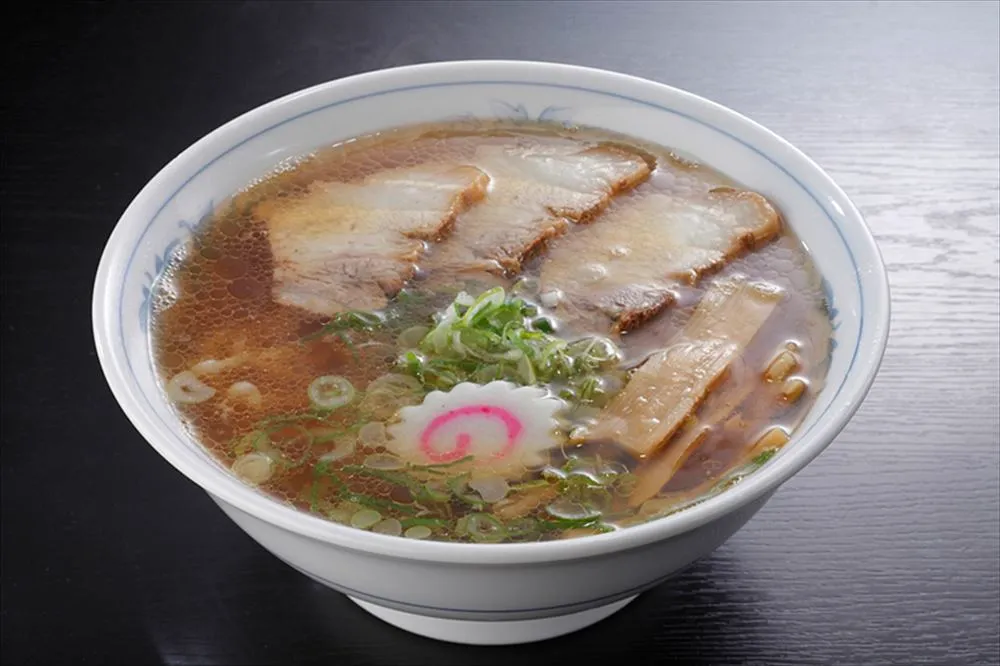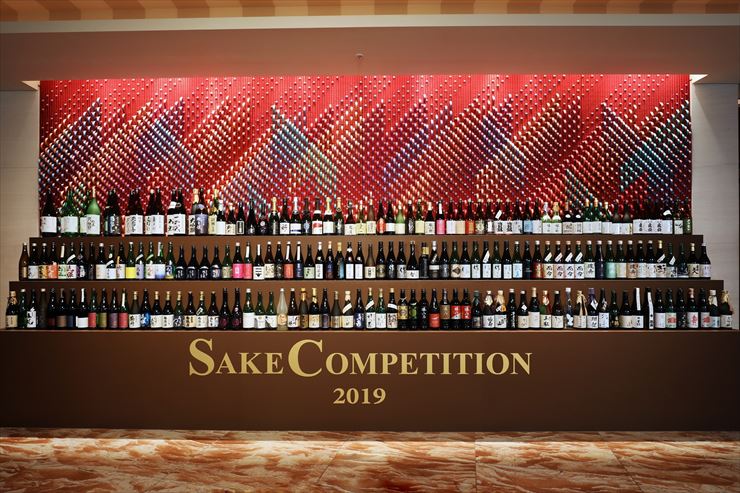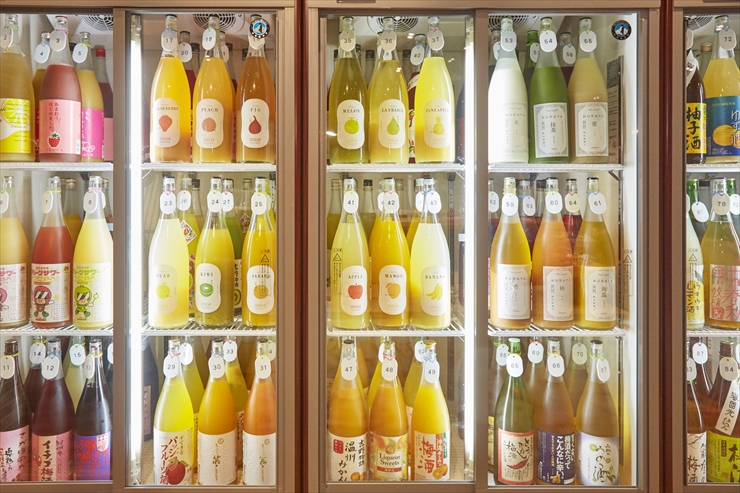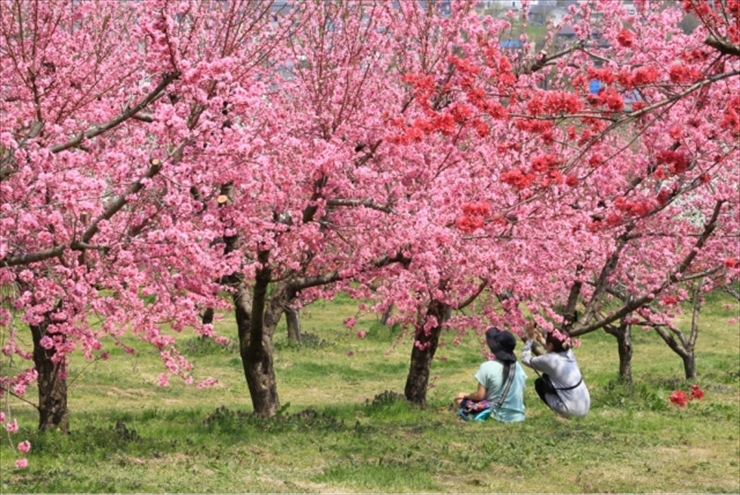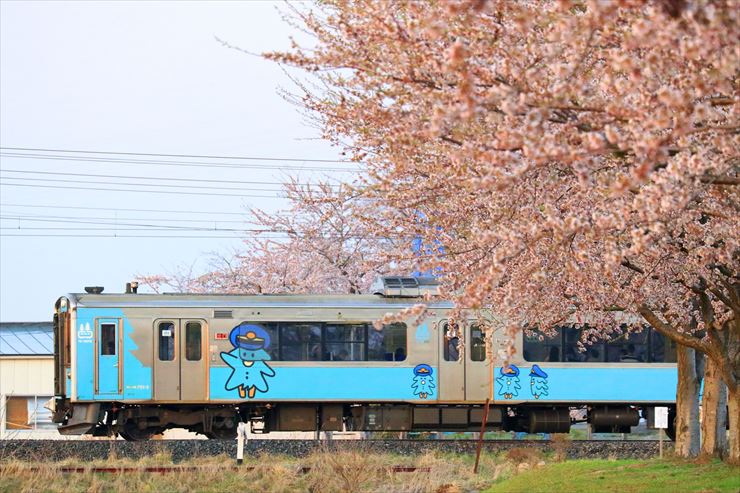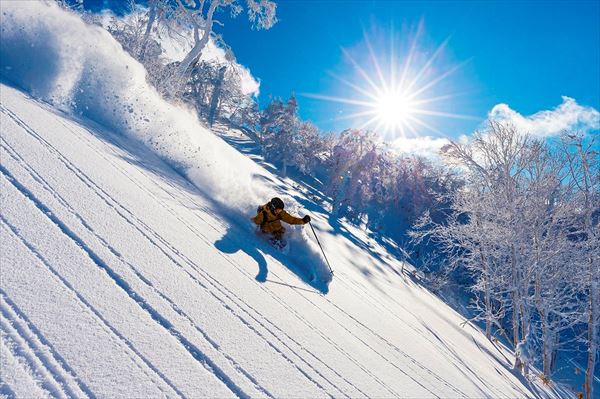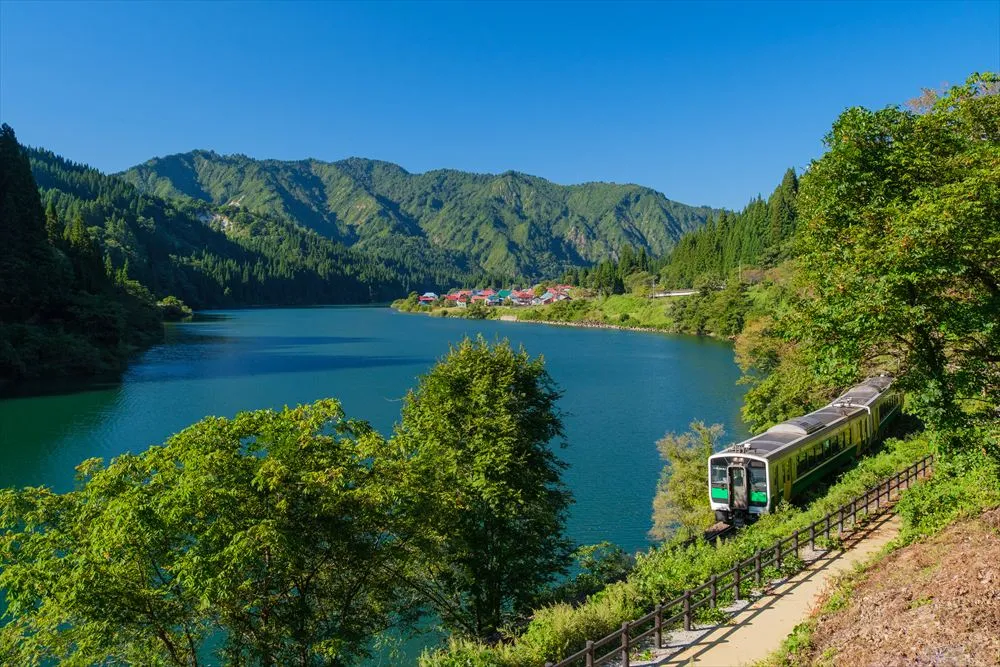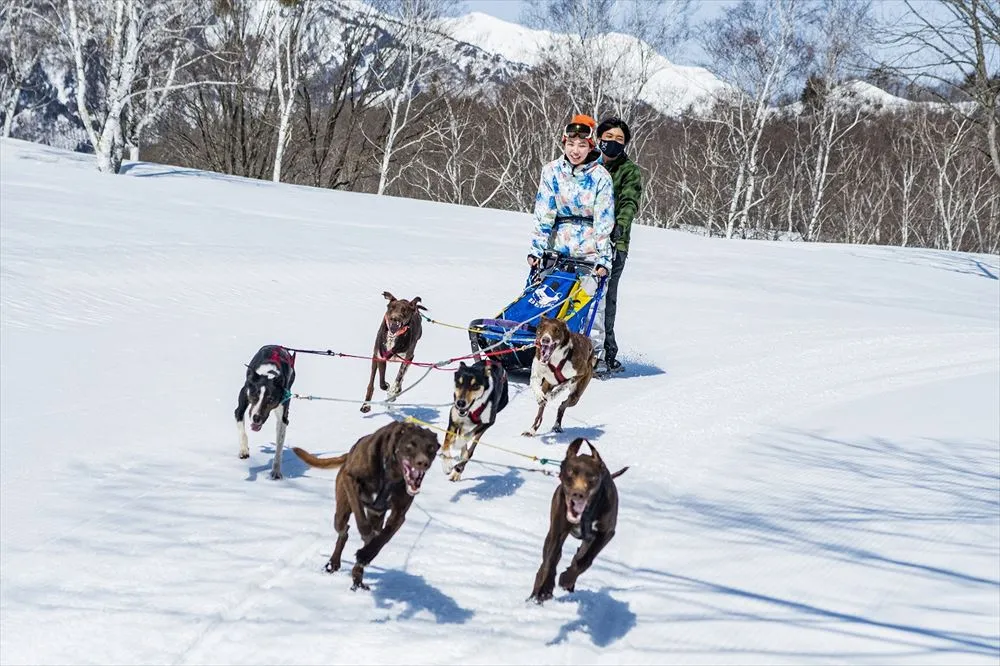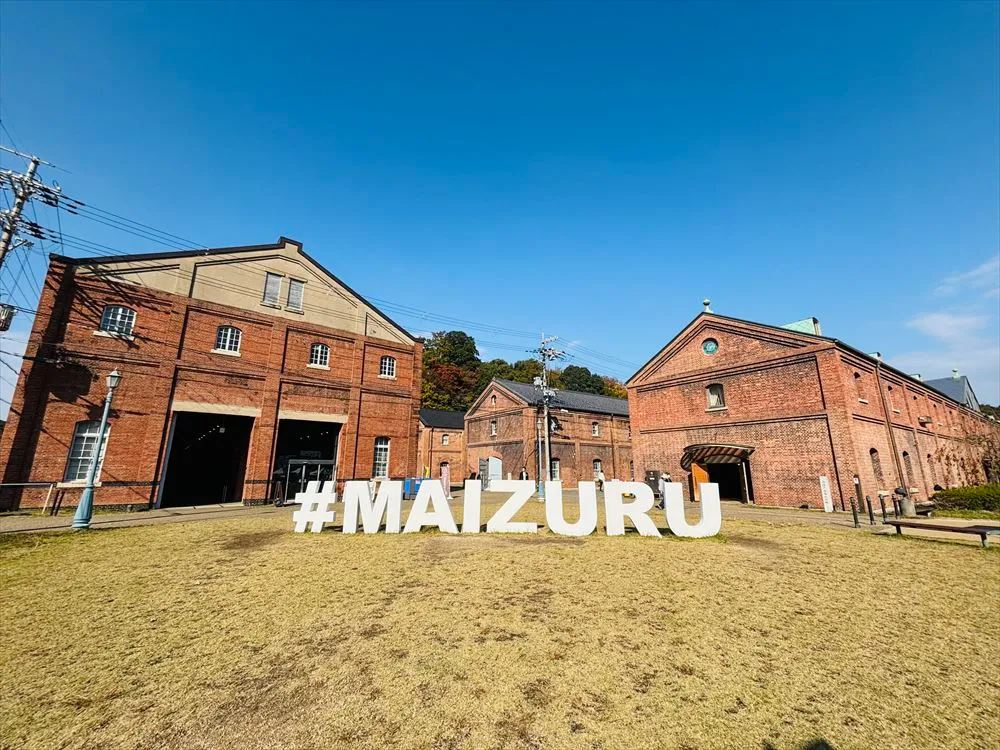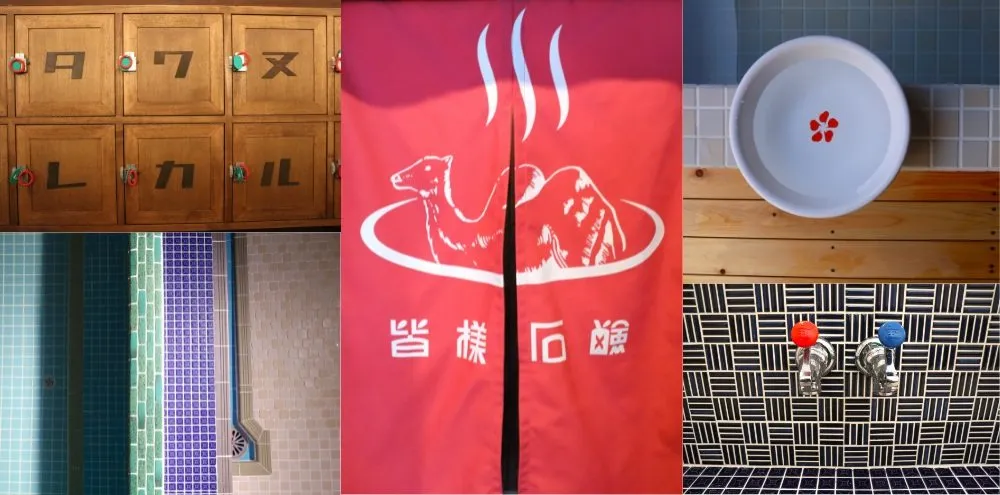Fukushima is the third largest prefecture in Japan. It is blessed with beautiful scenery and is proud of its history. Breathlessly beautiful autumn leaves and snowy landscapes fascinate people during autumn and winter. Fukushima is easily accessible from the Tokyo metropolitan area. Why don’t you visit Fukushima?
FUKUSHIMA
General Information
Fukushima Prefecture is divided into three areas: Aizu, Nakadori and Hamadori. Aizu-wakamatsu, which is famous for Tsurugajo Castle, and Kitakata, which is famous for ramen and warehouses, are in Aizu. In the center part of Nakadori are the cities of Fukushima and Koriyama. Mount Bandai, Lake Inawashiro and Miharu town are also all in Nakadori. Hamadori contains Iwaki and faces the Pacific Ocean which is warm even in winter due to the warm ocean current.
Aizu
Aizu-wakamatsu, Kitakata
Aizu-wakamatsu Castle (Tsurugajo Castle)
The castle looks like an elegantly flying crane and is called “Tsuru-ga-jo.” (Tsuru means “crane” in Japanese.) The castle also has a beautiful five-story tower. The tower was reconstructed and displays approximately 200 relics of previous lords of the castle. Cherry blossoms in spring and the snowy castle in winter are a must-see.

Aizu Matsudaira Oyakuen
Oyakuen is a circuit style garden. It was originally built as a villa for the lord of the castle in the 15th century. In the early Edo era (1603-1867), it was used as a garden. The name “Oyakuen” (herb garden) comes from the fact that various medical herbs were cultivated in the garden.

Iimoriyama Hill
Iimoriyama is the location of Byakkotai’s tragedy that occurred during the Boshin War (1868-1869), which was a war between the old Tokugawa government and the new Meiji government. The summit commands a view of Tsurugajo Castle and the town of Aizu-wakamatsu.
Byakkotai was a corps consisting of more than 300 male members who were between 16 and 17 years of age, who studied within the Nisshinkan. At the end of the Edo Shogunate, the Boshin War occurred in 1868 during which the Byakkotai were ordered to fight in the battle. Only twenty boys survived from a battle in Tonokuchihara and fled to Iimoriyama. However, they saw fires in the nearby town and thinking Tsurugajo Castle had fallen, they committed ritual suicide.

Aizu Buke Yashiki
The warrior residences and a magistrate’s office are reconstructed on the site and simulate the atmosphere of that time.
Aizu Hanko Nisshinkan
Nisshinkan, which was a school of the Aizu domain, was built in 1803 and was one of the finest schools in Japan in terms of the scale and the quality of education, out of over 300 competing schools located all over Japan. Besides martial arts, reading and writing, astronomy, medicine, science and manners were taught. It was originally located adjacent to the Tsurugajo Castle but burned down during the Boshin War. The buildings were later reconstructed where they stand now. Visitors can experience Japanese archery, the tea ceremony, zazen (seated meditation) and painting on an akabeko (a small cow-shaped toy). Advanced bookings are necessary for all activities, except Japanese archery.


Education in Aizu Domain
When male children of the Samurai in Aizu domain became ten years old, they entered domain school or “Nisshinkan,” which was established in 1803. At that time, the fifth lord of the Aizu domain Lord Matsudaira Katanobu started a large reform of the Aizu domain. He thought prosperity through agriculture, commerce and industry would be the foundations for the domain’s future economic success, so cultivating human resources would be a key factor in achieving this goal. Nisshinkan was thought to be one of the best schools among the 300 schools in Japan at the time. It created many excellent graduates including members of Byakkotai. Medicine, astronomy, literary and military arts were taught based on the principles of Confucianism and facilities for students included an observatory, printing office, library and a pool. A wide scope of etiquette was necessary for warriors to possess from table manners to the code of hara-kiri, which is ritual suicide.
Walking in Aizu-wakamatsu
Aizu-wakamatsu developed as Lord Matsudaira’s castle town and yielded 230,000 goku of rice. If you walk around the town, you can see historical sites and cherished old shops. There are galleries, lacquerware shops and e-rosoku (picture candle) shops around Nanokamachi-dori street. Aizu Shuzo Hakubutsukan (Aizu Sake Brewery Museum) houses tools for the sake brewer of the Aizu domain. The “Haikara-san” bus is convenient for touring the town.
Higashiyama Onsen
Higashiyama Onsen hot spring resort has a 1250-year history and continues to be popular, especially among cultural icons. Yosano Akiko (tanka poet, 1878-1942) and Takehisa Yumeji (poet and painter, 1884-1934) both loved this onsen. Hotels are dotted along the river, surrounded by mountains.

Ouchi-juku
Ouchi-juku prospered during the Edo era (1603-1867) as a post station on Aizu-nishi-kaido street that connected Aizu-wakamatsu and Imaichi in Nikko (Tochigi Prefecture). About 40 thatched-roof houses re-create the atmosphere of the time.

Kitakata
Kitakata is well-known for the number of storehouses it holds. It is said that there are more than 2000 storehouses in the town. Various brewing cultures such as sake, miso and soy sauce were developed in Kitakata. That’s why it has scores of brewery storehouses. There are also warehouses to stock commodities for the harsh snowy winter, many of which are still in use today. A walk in the retro town is fun.
Ramen Noodles
Kitakata is one of the three best places for ramen, along with Sapporo (Hokkaido) and Hakata (Fukuoka). Curly thick noodles and a plain soup based on niboshi (small dried sardines) and kombu (kelp) are characteristics of the Kitakata ramen. There are over 100 ramen shops in the town.

Sake Brewery
Kitakata is famous for good sake made from Mount Iide spring water and delicious Aizu rice. Some breweries offer tours and sake-tasting.

Food
Fukushima is often called “The Kingdom of Fruit.” Various kinds of fruit, such as peaches, apples, cherries, plums, pears, grapes, strawberries and kaki persimmon can be eaten here. In addition to Kitakata Ramen, Shirakawa ramen (from the southern part of the prefecture) is also popular. Local Aizu sake is popular as well. Sake brewing is a traditional industry in Aizu. Lord Gamo Ujisato (1556-1595) encouraged the brewing of sake and the industry flourished.
Souvenirs
Aizu Lacquerware is of a high quality and is made using superior techniques such as maki-e (gold lacquer) and chinkin (sunken gold decoration). It is good for both for decoration and everyday use. Akabeko (a red cow toy) is a humorous toy, but it has been used as a lucky charm for a long time. It shakes its head humorously. “E-rosoku (picture candles) are colorful candles that have pictures painted around them. The beautiful colors and patterns make them attractive souvenirs.
You may also like this:
Nakadori
Koriyama / Inawashiro / Urabandai
Lake Inawashiro
Lake Inawashiro is the fourth largest lake in Japan. It is the fifth most transparent lake in the world and it beautifully reflects Mount Bandai. Facilities for marine sports, bathing spots and camp sites are all located on the lakeshore. Ski resorts, golf courses and facilities for sky sports are all located at the foot of Mount Bandai. Swans come to the lake between late October and early April every year.

Hideyo Noguchi Memorial Hall
Hideyo Noguchi, world-famous doctor, was born in Inawashiro in 1876. His birthplace is preserved as well as relics and materials related to him.

Bandai Kogen Highlands
A large eruption of Mount Bandai in 1888 created Bandai Kogen Highlands. Breathtaking landscapes like Lake Hibara, Lake Akimoto, Lake Onogawa, Nakatsugawa Valley and Oguninuma-shitsugen Moor attract large numbers of visitors every year.
Goshiki-numa
There is a 3.7 km hiking course around Goshiki-numa, connecting Yanagi-numa Swamp, Ao-numa Swamp, Ruri-numa Swamp, Benten-numa Swamp, Midoro-numa Swamp and Bishamon-numa Swamp. Some swamps look blue, some look indigo and some look green. Ruri-numa Swamp is emerald green. Wild birds can often be seen here.
.webp)
Oguninuma-shitsugen Moor
Lake Oguninuma is a caldera lake with a circumference of 4 km, located atop Mount Oguni. Approximately 280 varieties of plant life, such as skunk cabbages and cotton grasses grow wild here.
Lake Hibara
This lake is the largest lake in Urabandai. There are promenades and cycling roads around the lake which is 35 km in circumference.

Nakatsugawa Valley
Autumn leaves are outstanding in Nakatsugawa Valley and hiking is fun.

Bandai-Azuma Skyline
Bandai-Azuma Skyline is a 29 km road stretching through the Azuma Mountain range and offers stunning views, with an average altitude of the road being 1,350 m. From this road Mount Bandai, Mount Adatara, Zao Mountain range, Lake Inawashiro and Lake Hibara can be seen, besides virgin forests, craters and moors. Jodo-daira in the middle of this course offers wild landscapes in a volcanic area, with clusters of alpine flora. You can take a walking trail from Jodo-daira to the crater of Mount Azuma-kofuji and there are other hiking courses to choose from. You can also find quiet onsen hot springs also scattered throughout the mountains.

Taki-zakura (Waterfall cherry blossom)
“Taki-zakura” is one of the three most famous cherry blossom trees in Japan and is located in the town of Miharu, northeast of Koriyama. It is more than 1000 years old, 12 m high and 10 m around. It is a great weeping cherry tree.

Abukuma-do Cave
Abukuma-do is one of the largest limestone caves in Japan. Rain water and groundwater containing calcium carbonate has been creating a fantastic underground landscape over a time span of 80 million years.

You may also like this:
Hamadori
Iwaki
Onahama
The sea adjacent to Iwaki is where warm and cold currents converge and is a good place to fish. Various types of fish are sold at the Onahama fish market every day.
Aquamarine Fukushima
Recently new aquariums have been built all over Japan and attract many visitors. Aquamarine Fukushima does not present any shows like other aquariums. The idea behind Aquamarine Fukushima is to precisely reproduce the natural aquatic environment. The aquarium’s building is all covered by glasses and has a unique design.

The theme of the aquarium is “The Sea of Current Crossing Points,” as the Black current and Oyashio current cross in the Pacific Ocean offshore from Fukushima. Sardines, bonitoes and tuna swim in a huge tank under the theme of converging warm and cold currents.Aquamarine Fukushima is the only aquarium with a species of fish named saury, live on display in the world. The biology of saury is still relatively unknown and capturing saury alive without harm is very difficult. After much effort and study, Aquamarine Fukushima is the first and only aquarium in the world to have a successful breeding program. Living seaweed and sea plants are on display, such rare presentations hold high educational value for visitors. Visitors can also see sea lions and walruses.

Note: A survey team of the Aquamarine Fukushima succeeded filming a living coelacanth off Indonesia on May 30th, 2006. It was the only the second time in the world the species has been filmed alive and a Japan-first to successfully film a live coelacanth.
Spa Resort Hawaiians
Visitors can enjoy pools, onsen and the hula dance in “Hawaii,” surrounded by an atmosphere of everlasting summer. There are baths in which you can soak wearing a swimsuit and baths where you can soak naked. “Yoichi,” a Japanese open-air bath, is the world largest open-air bath and in the Guinness Book of World Records. You might be surprised at how big it is.


